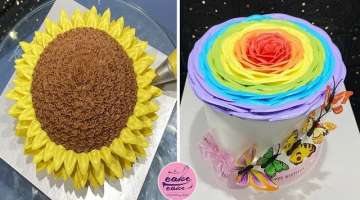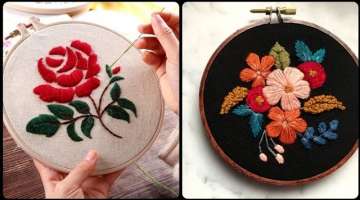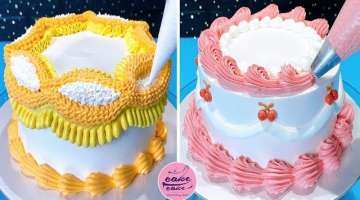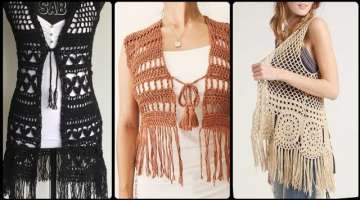Meet Laughing Kookaburra. Are They Laughing or Screaming? (video)
Australia is full of unique animals, but the laughing kookaburra must be one of the most well known. The bird prefers dry forests with streams but is also commonly found in backyards, parks, and gardens. Its population is stable in the wild and seems to thrive in the presence of humans: the birds are known to be bold and steal food from picnics, sometimes snatching hot meat straight from the barbecue. Meet Lovely Laughing Kookaburra. Let's get to know them a little more.
- 1 | 13

The Laughing Kookaburra (Dacelo novaeguineae) native to eastern Australia makes a very familiar call sounding like raucous laughter. Their call is used to establish territory among family groups, most often at dawn and dusk. One bird starts with a low, hiccuping chuckle, then throws its head back in raucous laughter. Often several others join in. If a rival tribe is within earshot and replies, the whole family soon gathers to fill the bush with ringing laughter. Hearing kookaburras in full chorus is one of the more extraordinary experiences of the Australian bush.
- 2 | 13

The laughing kookaburra is the largest kingfisher. It is a stout, stocky bird with a large head, prominent brown eyes, and a very large bill. They have a distinctive dark eye stripe. The sexes are very similar, although the female is usually larger and has less blue to the rump than the male.
- 3 | 13

The laughing kookaburra is the largest member of the kingfisher family and was once called the giant kingfisher. Most kingfishers are brightly colored—often blue or green—and many of them specialize in diving into streams and ponds to catch fish. The laughing kookaburra, however, is plainly colored and rarely eats fish! It has a light beige or white head and breast with brown wings and back. The head has a brown stripe like a mask crossing each eye. The beak is heavy and boat-shaped.
- 4 | 13

The kookaburra's breast has pale gray, wavy lines, and the outsides of the wings are speckled with pale blue dots. The male laughing kookaburra often has blue above the base of the tail. Both sexes have a rusty red tail with black bars and white tips. The female is slightly larger than the male.
- 5 | 13

The laughing kookaburra is one of four species of kookaburra; the other three are the blue-winged kookaburra, the spangled kookaburra, and the rufous-bellied kookaburra. It may look fairly drab, but you won't think the laughing kookaburra is ordinary after it opens its beak!
- 6 | 13

Laughing kookaburras are native to woodlands and open forests in Australia, where they perch in large trees and nest in cavities of tree trunks and branches. They keep the same territory year-round, and family groups gather together to announce the boundaries with their distinctive calls. Laughing kookaburras also have different, shorter calls used for finding others, courtship, raising an alarm, showing aggression, and begging for food.
- 7 | 13

Known as the "bushman's alarm clock" because it has a very loud call, a laughing kookaburra vocalizes in its family group at dawn and dusk. The call sounds like a variety of trills, chortles, belly laughs, and hoots. It starts and ends with a low chuckle and has a shrieking "laugh" in the middle. The song is a way the birds advertise their territory.
- 8 | 13

Even though they are kingfishers, laughing kookaburras eat more insects, reptiles, frogs, and rodents than fish. They are famous for eating snakes, killing a snake up to 3 feet (1 meter) long by grabbing it behind the head and smacking it on the ground. Snakes are sometimes dropped from midair onto the ground for tenderizing! The parent birds often give small snakes to their chicks so they can learn how to kill prey.
- 9 | 13

When hunting, a laughing kookaburra sits motionless on a perch and watches for prey to pass by. The bird can keep its head perfectly still while its body sways with the branch below. When prey is sighted, the kookaburra swoops down, lands next to it, and grabs it with its bill. It carries the food back to a perch and beats it several times against the branch to kill and soften the prey. The food is swallowed head first and whole. Laughing kookaburras at the San Diego Zoo and the San Diego Zoo Safari Park are offered mealworms, king worms, crickets, meat, minnows, and small mice.
- 10 | 13

Adult kookaburras pair for life and use the same nest hole, found in a tree hole or arboreal termite nest, each year. A breeding pair establishes a year-round territory that is also used by four to five of its grown young, which serve as helpers. These helper do their share of incubating the eggs, keeping the chicks warm, feeding their young siblings, and defending their parents' territory. All members of the group develop brood patches (a bare space on the breast with lots of blood vessels for warming the eggs).
- 11 | 13

Blue-winged Kookaburra: The blue-winged kookaburra is a large kingfisher with a long beak and a square head. Its head has brown streaks, while its shoulders, rump and (in males) the tail are blue in color. They are rather shy birds and are hardly noticed as they sit quietly perched among the foliage.
- 12 | 13

Its diet is made up of a variety of ground-dwelling animals. The kookaburra dives with beak open to grab the prey from the ground. Its beak is specialized to enable it to hold prey. After a successful catch, the bird returns with it to its perch. It beats the prey on the perch before swallowing it. However, it is very careful if it is hunting snakes. Undigested food is regurgitated, which can be seen on the ground below its nest. TKookaburra chicks are born blind and naked. They have an egg-tooth, to help them crack out of their egg shells. During the first week of their lives the chicks are very aggressive — the older ones often tend to kill the younger ones. For the first 1 to 2 months, the parents teach the young how to hunt, until they are old enough to fend for themselves.
- 13 | 13

The kookaburra's natural range is eastern and southern Australia, but in 1897 it was introduced into the southwest corner of the continent and in 1905 into Tasmania as well. Several attempts were made to import the species into New Zealand, but a population became established just around the city of Auckland. Australians are proud of their famous bird; Olly the Kookaburra was one of three mascots for the 2000 Olympic Games in Sydney, Australia. You can watch video below as two Laughing Kookaburra Laughing.



















